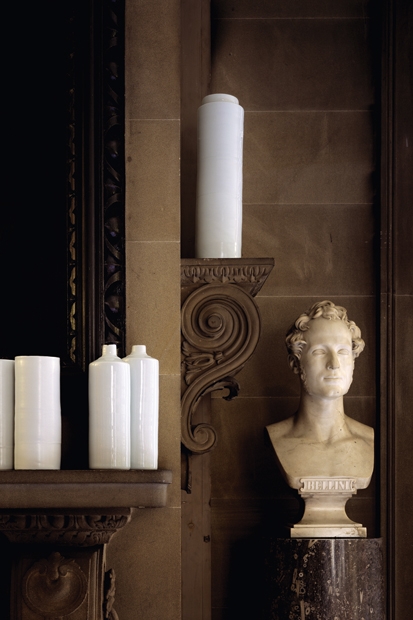For Edmund de Waal a ceramic pot has a ‘real life’ that goes beyond functionalism.This handsome book (designed by Atelier Dyakova) at the mid-point of his career, raises the question: ‘How good an artist is he?’
It is discursive, comprising essays by A.S. Byatt and Alexandra Munroe, short stories by Colm Tóibín and Peter Carey, an elegant photographic essay by Toby Glanville, a look at de Waal’s life to date by Emma Crichton-Miller and a piece by the man himself.
‘I am a potter who writes,’ de Waal said in a 2000 article in the Ceramic Review, although since then his book The Hare with Amber Eyes has carried his celebrity round the world. Is he a domestic potter or is he now making for museums and galleries? Does he make pots, or installations? Can he do both?
Pottery was described by Herbert Read in The Meaning of Art as ‘the simplest and the most difficult of all the arts. It is the simplest because it is the most elemental; it is the most difficult because it is the most abstract.’ Throwing off the influence of Hans Coper, Lucie Rie and Bernard Leach (making pots that were ‘very, very heavy, and very, very white’), de Waal is in the process of taking it into whole new areas. Read transformed the status of pottery between the wars. Now de Waal is doing so again, realising the question that W.H. Auden posed, ‘What’s / an intellectual of the middle classes?/ Is he a maker of ceramic pots?’
The book explores his many influences: such artists as Donald Judd, Carl Andre and Morandi; J.S. Bach (the fugue-like rhythms and repetitions of his installations); architects Mies van der Rohe and Isozaki Arata, and his love of poetry.








Comments
Join the debate for just £1 a month
Be part of the conversation with other Spectator readers by getting your first three months for £3.
UNLOCK ACCESS Just £1 a monthAlready a subscriber? Log in